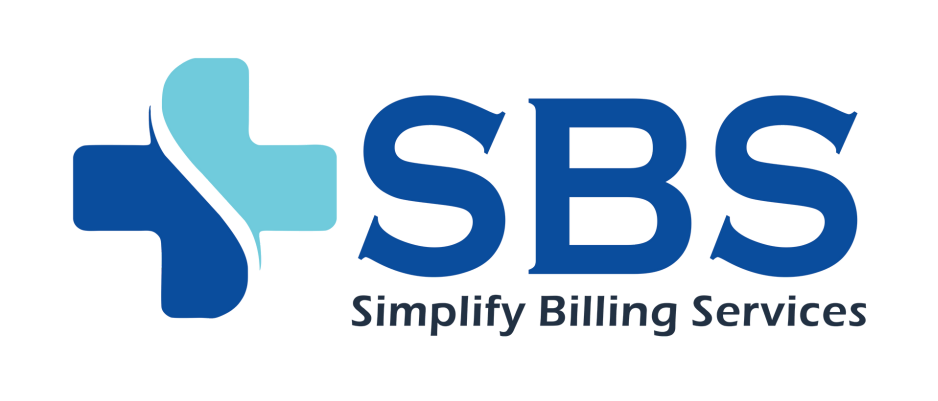In this comprehensive guide, I’ll share my expertise to help you understand, streamline, and optimize the critical process of determining patient insurance coverage and benefits.
As an experienced professional in healthcare reimbursement, I’ve spent years honing my skills in eligibility and benefits verification. This journey involves various key aspects, each essential to the financial health of healthcare providers and the satisfaction of their patients.
Statistics on the benefits of real-time eligibility verification
Reduced Claim Denials
- Real-time eligibility verification can help to reduce claim denials by up to 30%. This is because real-time verification provides up-to-date information on patient eligibility, benefits, and limitations. This information can be used to identify potential denials before a claim is submitted, allowing the provider to take corrective action.
Increased Revenue Collection
- Real-time eligibility verification can help to increase revenue collection by up to 5%. This is because real-time verification can help to prevent providers from collecting incorrect payments from patients. Additionally, real-time verification can help to speed up the claims processing cycle, which can lead to faster payments from insurance companies.
Improved Patient Satisfaction
- Real-time eligibility verification can help to improve patient satisfaction by up to 10%. This is because real-time verification can help to ensure that patients are receiving the care they need without having to worry about unexpected bills. Additionally, real-time verification can help to reduce the amount of time patients spend on the phone or in the office dealing with billing issues.
Reduced Administrative Costs
- Real-time eligibility verification can help to reduce administrative costs by up to 15%. This is because real-time verification can automate the eligibility verification process, which can free up staff time to focus on other tasks. Additionally, real-time verification can help to reduce the number of errors that occur during the eligibility verification process, which can save time and money.
The Crucial Role of Eligibility and Benefits Verification
At the heart of efficient healthcare reimbursement lies eligibility and benefits verification. It’s the initial step that sets the stage for the entire revenue cycle. Accurate verification ensures that healthcare providers receive timely payments for their services, while patients avoid unexpected financial burdens. Let’s dive deeper into the nuances.
The Verification Process: A Step-by-Step Overview
Understanding the process is paramount. Here’s a breakdown of the key steps involved:
Patient Information Collection: Gathering comprehensive patient information, including insurance details, personal data, and medical history.
Insurance Verification: Confirming the patient’s insurance coverage, including plan type, policy number, and effective dates.
Benefit Verification: Digging into the specifics of the patient’s benefits, such as deductibles, co-payments, and coverage limits.
Pre-Authorization Checks: Determining if specific procedures or treatments require pre-authorization from the insurance company.
Coordination of Benefits (COB) Review: Identifying primary and secondary insurance coverage when applicable.
The Art of Information Gathering
Accurate verification starts with meticulous information collection. As an expert, I’ve learned the value of thoroughness. Gathering complete patient data, including accurate insurance information, minimizes billing errors, reduces claim denials, and enhances the overall patient experience.
Unraveling the Insurance Puzzle
The world of health insurance can be perplexing, with numerous plan types, networks, and coverage options. As an experienced professional, I’ve navigated these complexities, allowing me to provide patients with a clear understanding of their insurance coverage. This transparency fosters trust and ensures patients make informed decisions about their healthcare.
Benefits Verification: A Deep Dive
Benefits verification delves into the specifics of a patient’s coverage. I’ve developed expertise in interpreting insurance policies to uncover crucial details, such as:
Deductibles: The amount a patient must pay out of pocket before insurance coverage kicks in.
Co-Payments: Fixed amounts a patient pays for specific services or prescriptions.
Coverage Limits: Maximum amounts insurance will pay for certain procedures or services.
In-Network vs. Out-of-Network: Understanding the implications of healthcare provider choices on patient costs.
Pre Authorization: Navigating the Red Tape
Certain procedures and treatments require pre-authorization from insurance companies. My experience has taught me the intricacies of navigating this bureaucratic process. Efficiently obtaining pre-authorizations ensures that healthcare providers can proceed with treatments without unexpected coverage issues.
Coordination of Benefits (COB)
In cases where patients have multiple insurance plans, COB verification is essential. It involves determining which insurance plan is primary and which is secondary. Navigating COB complexities minimizes payment delays and ensures the correct insurance provider is billed.
Technology: A Valuable Ally
I’ve witnessed the transformative power of technology in eligibility and benefits verification. Modern software solutions streamline the process, reducing manual errors and enhancing efficiency. Integrating electronic health records (EHRs) and eligibility verification tools has become a standard practice in the field.
Compliance: Staying on the Right Side of Regulations
Navigating healthcare reimbursement isn’t just about understanding insurance; it’s also about compliance. Adhering to regulatory guidelines, such as the Health Insurance Portability and Accountability Act (HIPAA), is non-negotiable. My experience has emphasized the importance of safeguarding patient data and ensuring confidentiality throughout the verification process.
Patient Communication: Building Trust
As an expert, I’ve learned that clear and compassionate communication with patients is paramount. Patients often have questions and concerns about their insurance coverage. Taking the time to address these inquiries fosters trust and ensures patients have a positive experience with their healthcare providers.
The Revenue Cycle Impact
Effective eligibility and benefits verification have a ripple effect throughout the revenue cycle. Accurate information at the start reduces claim denials, accelerates reimbursements, and minimizes administrative burdens. It’s a linchpin in maintaining a healthy financial foundation for healthcare providers.
Challenges in Eligibility and Benefits Verification
I’ve encountered various challenges in this field, including:
Insurance Plan Complexity: The intricacies of different insurance plans can be daunting.
Incomplete or Inaccurate Patient Information: Gathering accurate patient data can be a hurdle.
Policy Changes: Keeping up with evolving insurance policies and regulations is an ongoing challenge.
The Path to Expertise
Becoming an expert in eligibility and benefits verification requires a commitment to continuous learning and improvement. Staying updated with insurance industry changes, attending relevant seminars, and networking with peers are all part of the journey.
Tools and Resources
I’ve leveraged a range of tools and resources to excel in eligibility and benefits verification:
Eligibility Verification Software: Streamlines the process and reduces manual errors.
Insurance Databases: Access to up-to-date insurance information is invaluable.
Professional Organizations: Membership in groups like the Healthcare Financial Management Association (HFMA) offers resources and networking opportunities.
Frequently Asked Questions (FAQs) Eligibility and Benefits Verification in Healthcare Reimbursement
Q1: What is eligibility and benefits verification, and why is it important in healthcare reimbursement?
Answer: Eligibility and benefits verification is the process of confirming a patient’s insurance coverage and understanding the specifics of their benefits, including deductibles, co-payments, and coverage limits. It is crucial in healthcare reimbursement because accurate verification ensures that healthcare providers receive timely payments for their services and that patients are not faced with unexpected financial burdens. It sets the stage for a smooth and transparent reimbursement process.
Q2: How can healthcare providers collect accurate patient information for verification purposes?
Answer: Collecting accurate patient information begins with comprehensive data gathering during the patient registration process. This includes verifying personal details, insurance plan specifics, and medical history. Implementing electronic health records (EHRs) and eligibility verification tools can also help streamline this process and reduce errors.
Q3: What are the typical challenges in eligibility and benefits verification, and how can they be overcome?
Answer: Common challenges include dealing with complex insurance plans, incomplete or inaccurate patient information, and keeping up with policy changes. Overcoming these challenges requires ongoing training and education, leveraging technology for verification, and implementing robust policies and procedures for data collection.
Q4: How does technology, such as eligibility verification software, impact the verification process?
Answer: Eligibility verification software streamlines the process by automating data checks and reducing manual errors. It provides access to real-time insurance information, speeding up verification and minimizing claim denials. Integrating electronic health records (EHRs) and verification tools has become essential for efficiency and accuracy.
Q5: What are the consequences of inaccurate eligibility and benefits verification for healthcare providers and patients?
Answer: Inaccurate verification can lead to denied claims, delayed reimbursements, financial losses for healthcare providers, and unexpected costs for patients. It can also strain provider-patient relationships and result in administrative burdens.
Q6: What are the key compliance considerations when handling patient data during verification?
Answer: Compliance with regulations like the Health Insurance Portability and Accountability Act (HIPAA) is critical. Protecting patient data, ensuring confidentiality, and following industry-standard security practices are non-negotiable to avoid legal and ethical issues.
Q7: How can healthcare providers improve patient communication regarding insurance coverage and benefits?
Answer: Effective and compassionate communication is key. Healthcare providers should be prepared to explain insurance coverage in plain language, address patient questions, and provide clear cost estimates for treatments. This fosters trust and helps patients make informed decisions.
Q8: What are the best practices for staying updated with changing insurance policies and regulations?
Answer: Staying updated requires continuous learning. Professionals should attend relevant seminars, participate in industry webinars, and join professional organizations like the Healthcare Financial Management Association (HFMA). Regularly reviewing updates from insurance companies and regulatory bodies is also essential.
Q9: Can you provide examples of how efficient eligibility and benefits verification positively impact the revenue cycle for healthcare providers?
Answer: Efficient verification reduces claim denials, accelerates reimbursements, and minimizes administrative overhead. For instance, when providers have accurate benefit information upfront, they can collect patient co-payments at the time of service, improving cash flow and reducing bad debt.
Q10: What resources and tools are available for professionals looking to enhance their expertise in this field?
Answer: Healthcare professionals can access eligibility verification software, insurance databases, and professional organizations like HFMA for resources and networking opportunities. Pursuing advanced certifications in revenue cycle management is also an excellent way to enhance expertise.
Conclusion
My experience in eligibility and benefits verification has taught me that this crucial step is the foundation of efficient healthcare reimbursement. It ensures that healthcare providers are fairly compensated for their services and that patients can access the care they need without financial surprises. Embracing the complexities and challenges of this field is a path to expertise and a rewarding career dedicated to the well-being of both providers and patients.





